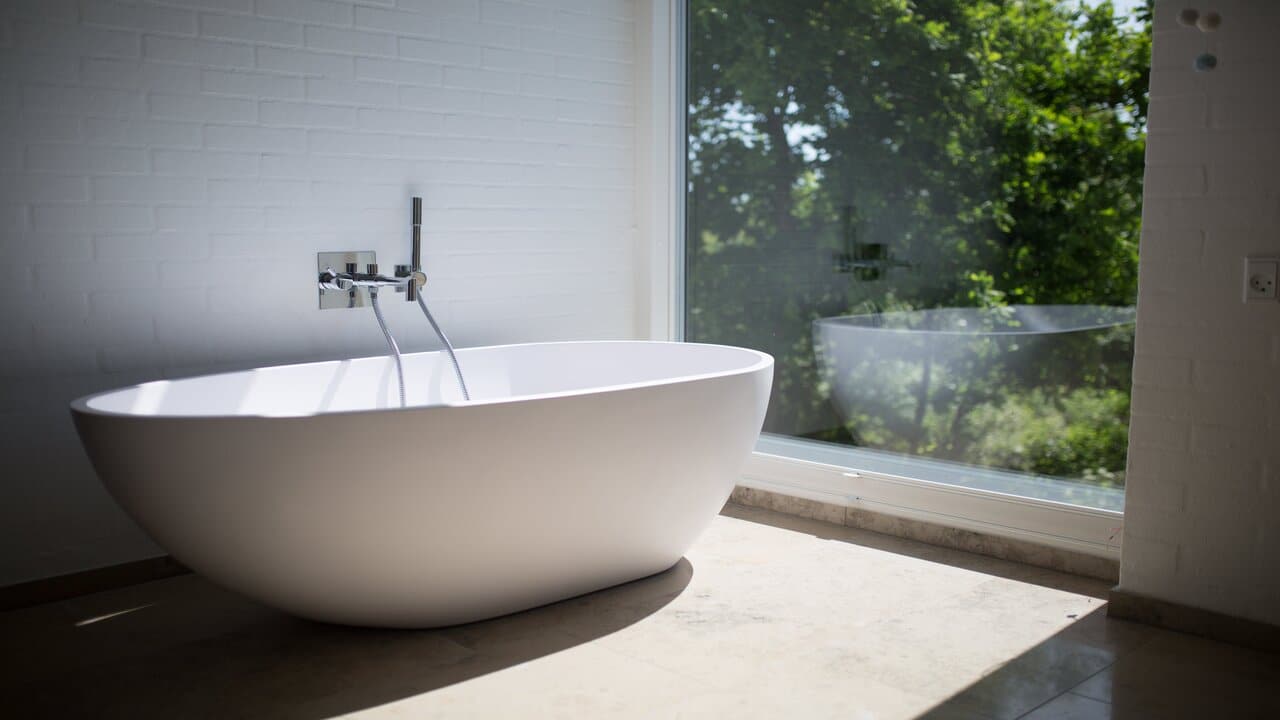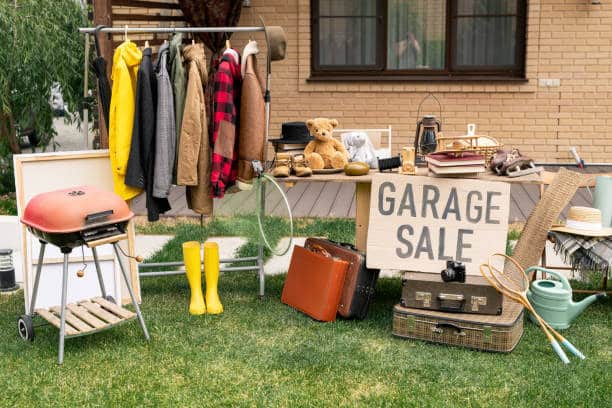To construct load-bearing walls, fire-resistant, and environmentally friendly houses, straw bales are a great choice. Straw bale construction is a centuries-old technique that is making a comeback in popularity, and for good reason.
This method has been used for centuries in many parts of the world.
Straw bales are a 100 percent natural material with zero volatile organic compounds (VOCs) that could off-gas into your home. This makes them a safe and healthy choice for building materials.
If you are wondering what a house built with straw bales looks like, read this article to the end. It answers a pertinent question ‘What are straw bale houses?’. You will also gain clarity on the amazing benefits of building with straw bales.
Table of contents
What is a Straw Bale?
‘Straw is the dry stalks of cereal plants, such as wheat, rice, rye, and oats. Straw bales are typically rectangular in shape and measure about 18 inches wide, 22 inches long, and 14 inches tall.
A straw bale is a bundle of straw that is tightly bound together with twine, wire, or string.
Straw bales are also sustainable building materials that are fire-resistant, have good insulation properties, and are relatively inexpensive.
Straw bale construction is a type of natural building that has been used for centuries in many parts of the world. They can be used for animal bedding, construction, composting, and erosion control.
Its history dates back to the Han Dynasty (206 BC – 220 AD) in China. In the 19th century, straw bale construction gained popularity in the United States, particularly in the Great Plains and Midwest regions.
Today, straw bale construction is gaining renewed recognition for its numerous advantages, including its sustainability, energy efficiency, and fire resistance
Read Also: How Does Urban Landscape Design Work?
What are Straw Bale Houses?
Straw bale houses are homes built using straw bales as a primary structural element or insulation material. Straw bale construction is an ancient building technique that has been used for centuries in many parts of the world.
It is considered a sustainable and environmentally friendly building method due to its low environmental impact, energy efficiency, and use of renewable resources.
With the quest for eco-friendly activities, straw bale houses are becoming increasingly popular as a sustainable building option. They are energy efficient, durable, and can be constructed using local materials.
Read Also: How Does Plasma Cutters Work?
Benefits of straw bale houses
The growing recognition of their benefits is driving innovation and advancements in straw bale construction techniques. Below are notable benefits of straw houses:
- Energy Efficiency: Straw bales provide superior thermal insulation compared to conventional materials like wood or concrete. This natural insulation helps regulate indoor temperatures, reducing heating and cooling costs by up to 75%.
- Durability and Resilience: Straw bale walls are surprisingly strong and durable, capable of withstanding high winds, heavy snow loads, and even earthquakes.
- Sustainability and Environmental Friendliness: It requires minimal processing and transportation, reducing the environmental impact of construction. Additionally, straw bale construction minimizes waste generation and promotes the use of natural materials.
- Affordability: Straw bales are readily available and relatively inexpensive compared to traditional building materials.
- Fire Resistance: Contrary to popular belief, straw bales are naturally fire-resistant. The tightly packed straw fibers provide a barrier that slows the spread of flames, giving occupants ample time to evacuate in case of a fire.
- Soundproofing: Straw bale walls effectively absorb sound, providing excellent soundproofing properties.
- Health Benefits: Straw bale houses offer a healthier indoor environment.
- Aesthetics: Straw bale houses can be designed to reflect various architectural styles, from traditional to modern. The natural texture and color of straw can add a unique and rustic charm to any home.
Read Also: How Does Swamp Coolers Work?
Are straw bale houses cheaper to build?
Yes, straw bale houses can be cheaper to build than conventional homes. However, the exact cost will depend on a number of factors, including the size and complexity of the home, the cost of materials in your area, and the availability of skilled labor.
Straw bales are a very low-cost material. They can be sourced locally for free or very little cost, and they are easy to transport and handle. Also, straw bale walls are very energy-efficient. They provide excellent insulation, which can help to reduce energy costs.
In addition to their energy efficiency, straw bale houses are also relatively inexpensive to construct. Straw bales are a readily available and renewable resource, and they can be stacked and wired together to form sturdy walls. T
his can save you a considerable amount of money on materials and labor costs compared to traditional construction methods.
How to Build a modern straw bale house
Building a modern straw bale house involves a series of steps that require careful planning, execution, and attention to detail. To build a modern straw bale house, follow the step by step guide below:
#1. Design and Planning:
- a. Concept Development: Envision the desired style, layout, and features of your straw bale house. Consider factors like energy efficiency, natural lighting, and sustainable materials.
- b. Site Selection: Choose a suitable location with proper drainage, adequate sunlight exposure, and access to utilities. Consider soil conditions and potential environmental factors.
- c. Professional Consultation: Engage an architect or engineer experienced in straw bale construction to design the structural integrity and ensure compliance with local building codes.
#2. Foundation and Framing:
- a. Foundation Construction: Pour a concrete foundation that is level, stable, and extends beyond the walls. Consider using insulated concrete forms (ICFs) for added insulation.
- b. Sill Plate Installation: Install a treated wood sill plate on top of the foundation to provide a level base for the straw bale walls.
- c. Lumber Framing: Construct the basic frame of the house, including floor joists, roof rafters, and wall studs. Use wood treated for moisture resistance.
#3. Straw Bale Wall Construction:
- a. Straw Bale Preparation: Source high-quality straw bales that are dry, clean, and pest-free. Inspect the bales for any damage or contamination.
- b. Wall Layout: Lay out the straw bales according to the design plan, ensuring proper alignment and stacking. Use twine or wire to bind the bales together for stability.
- c. Wall Raising: Raise the straw bale walls using cranes or manual lifting techniques. Secure the bales to the foundation and framing with wooden dowels or rebar stakes.
#4. Wall Protection and Finishing:
- a. Moisture Protection: Apply a protective layer of lime plaster or stucco to the exterior straw bale walls to prevent moisture intrusion and fire resistance.
- b. Interior Finishes: Install interior finishes, such as drywall, wood paneling, or natural clay plaster, to create a comfortable and aesthetically pleasing interior.
#5. Roofing and Exterior Components:
- a. Roof Installation: Install the chosen roofing material, ensuring proper ventilation and drainage. Consider using sustainable roofing options like metal or recycled materials.
- b. Windows and Doors: Install energy-efficient windows and doors that provide natural light and ventilation while maintaining thermal insulation.
- c. Exterior Finishing: Apply exterior finishes like siding, paint, or natural materials to create a desired aesthetic and protect the exterior walls from weather elements.
#6. Mechanical Systems:
- a. Plumbing: Install plumbing fixtures, pipes, and water supply lines to provide hot and cold water throughout the house.
- b. Electrical: Install electrical wiring, outlets, and fixtures to provide power throughout the house. Consider energy-efficient lighting options.
- c. Heating and Cooling: Install appropriate heating and cooling systems based on climate conditions and energy efficiency goals. Consider renewable energy sources like solar or geothermal systems.
#7. Interior Design and Furnishings:
- a. Interior Design: Create a cohesive and personalized interior design that complements the overall style of the straw bale house.
- b. Furnishings: Select furniture and décor that reflects your taste and complements the interior design concept.
- c. Landscaping: Enhance the exterior of the house with landscaping that complements the architecture and creates a harmonious connection with the surrounding environment.
Read Also: How To Kick Someone Out Of Your House? A Polite Way
What is the lifespan of a straw bale house?
The lifespan of a straw bale house can be up to 100 years or more if properly constructed and maintained. Generally, straw bales are naturally resistant to fire, pests, and decay, and they provide excellent insulation.
However, it is important to protect the straw bales from moisture damage, as wet straw can rot and attract pests.
To extend the lifespan of a straw bale house, you must protect the bales from moisture. This ensures that the roof and exterior walls are properly waterproofed and that there is adequate drainage around the house.
Also, allow air to circulate through the straw bale walls to prevent moisture buildup. Look for any signs of moisture damage, such as mold or mildew. If you find any damage, repair it immediately.
Finally, maintain the exterior finishes. Regularly inspecting and repairing the exterior finishes, such as plaster or stucco, to prevent moisture intrusion will increase its life span.
Read Also: How Selling a House Works | What to Know Before Selling
What is an example of straw bale construction?
Straw bale construction has been used for centuries in various parts of the world due to its sustainability, affordability, and excellent insulation properties.
Here are a few notable examples of straw bale construction across the globe:
#1. The S-House in Austria
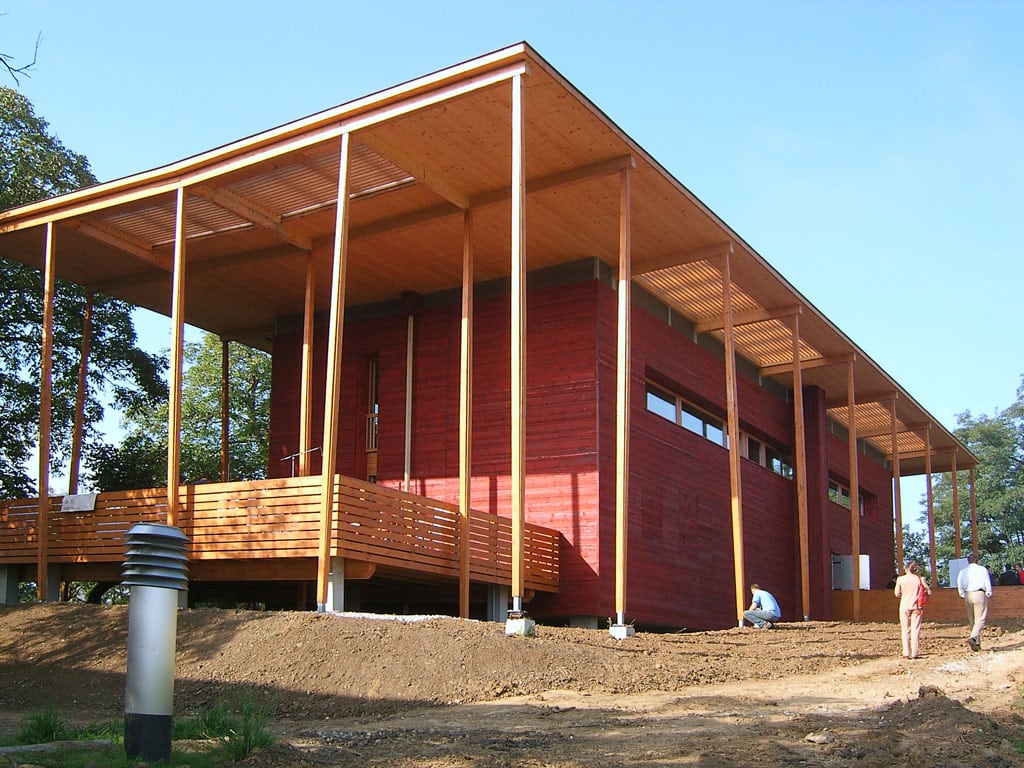
This award-winning straw bale house in Austria exemplifies the versatility and energy efficiency of straw bale construction.
It meets the Passivhaus energy standard, requiring minimal energy for heating and cooling.
The house features a curved design with ample natural light and a harmonious blend of traditional and modern elements.
#2. The Straw Bale Lodge in South Africa
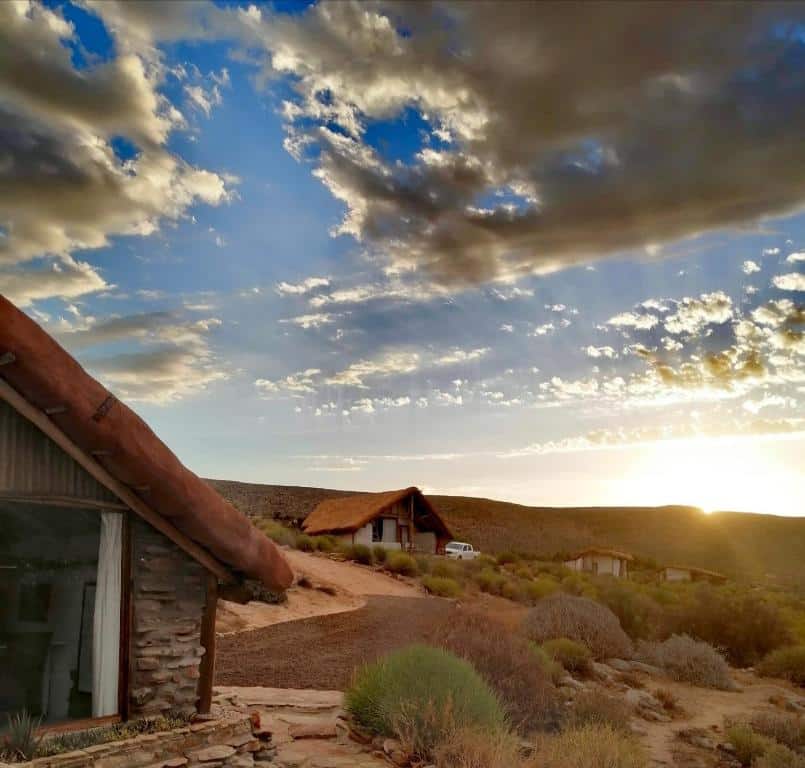
This luxurious lodge in South Africa showcases the elegance and adaptability of straw bale construction.
Accommodating up to 22 guests, the lodge features spacious rooms, a swimming pool, and breathtaking views of the surrounding countryside.
It has hosted prominent figures like Nelson Mandela and Tony Blair.
#3. The Nax Mont-Noble Hotel in Switzerland
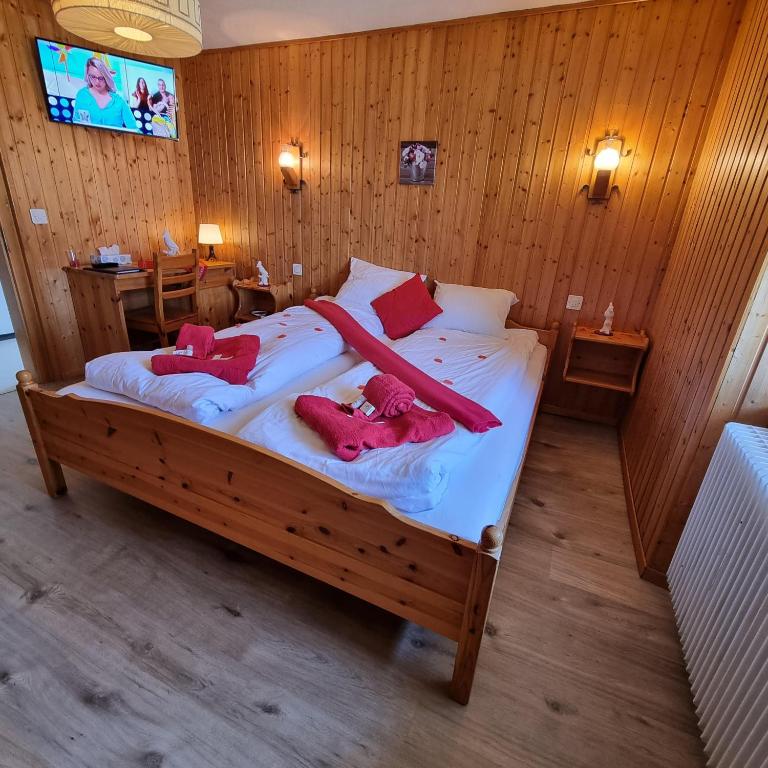
Set amidst the picturesque Swiss Alps, the Nax Mont-Noble Hotel stands as the first hotel in Europe constructed entirely with straw bales.
This eco-friendly hotel offers comfortable accommodations and stunning mountain views, demonstrating the suitability of straw bale construction for hospitality projects.
#4. The Harrison Vault in California

Located in Joshua Tree, California, the Harrison Vault is a testament to the resilience and adaptability of straw bale construction.
Engineered to withstand the high seismic loads of the region, the vault features a unique dome-shaped design and utilizes straw bales as the primary structural material.
#5. The Straw Bale Eco-Village in China
In the village of Shangzhuang, China, a community of over 100 straw bale houses has emerged as a model for sustainable living.
These homes, constructed with locally sourced materials, demonstrate the potential of straw bale construction to provide affordable and environmentally friendly housing solutions.
Frequently Asked Questions
Straw bale houses can last for at least 100 years. The oldest known straw bale house is still standing in Nebraska, and it was built in the 1880s.
Yes, straw bale houses are safe. They are fire-resistant, durable, and earthquake-resistant.
Straw bale construction is legal in all 50 states in the United States, as well as in many other countries around the world.
The best type of straw for straw bale construction is wheat straw. Wheat straw is strong, durable, and has a high fire resistance.
Straw bale houses are surprisingly strong and durable, capable of withstanding high winds, heavy snow loads, and even earthquakes.
Straw Bales
Binding Materials
Foundation
bamboo poles, or timber framing
Plaster or Stucco
shingles, metal panels, or tile
Mechanical Systems
Waterproofing membranes
Conclusion
Straw bale construction has emerged as a viable and sustainable alternative to traditional building methods, offering a range of benefits that align with the growing emphasis on environmental responsibility and energy efficiency.
Straw bales, a byproduct of agricultural practices, provide a readily available, renewable, and cost-effective resource for construction. Discover what straw bale houses are and why you should get one.
References
- Strawbale.com –
- Wikipedia.org – Straw-bale construction
- Build With Rise.com – Building With Straw Bales: A Comprehensive Guide

